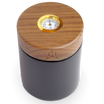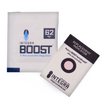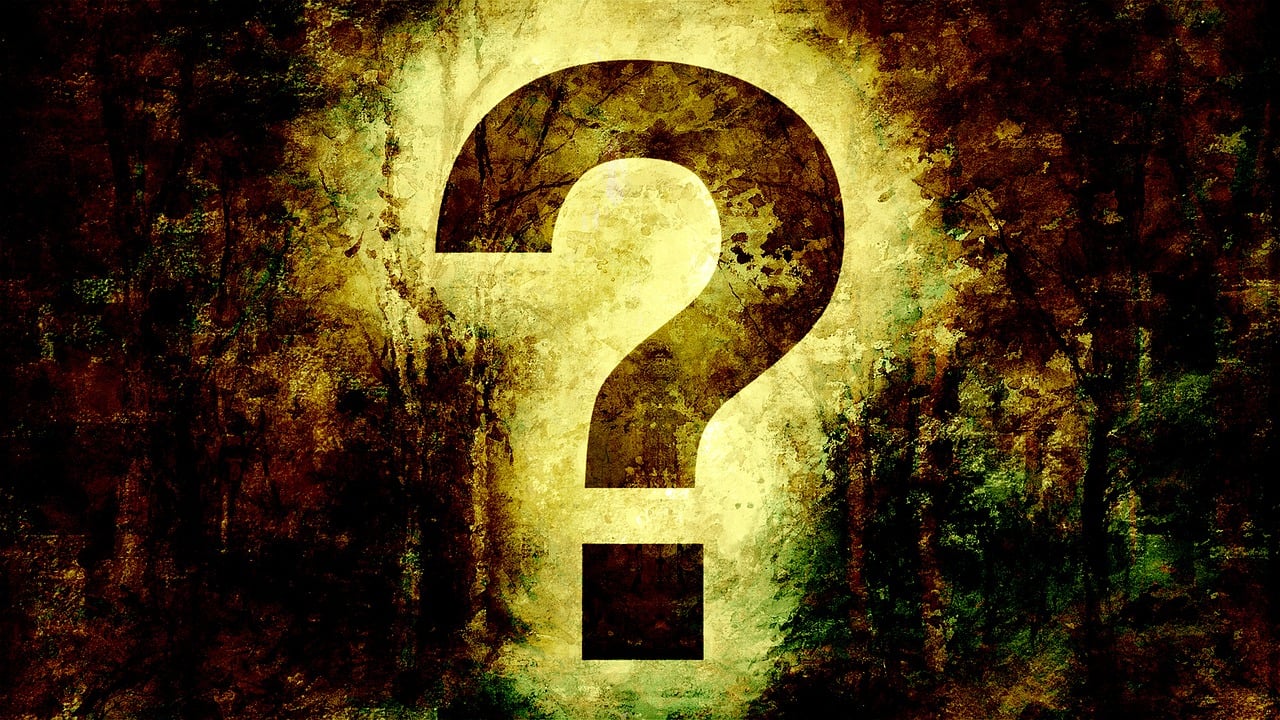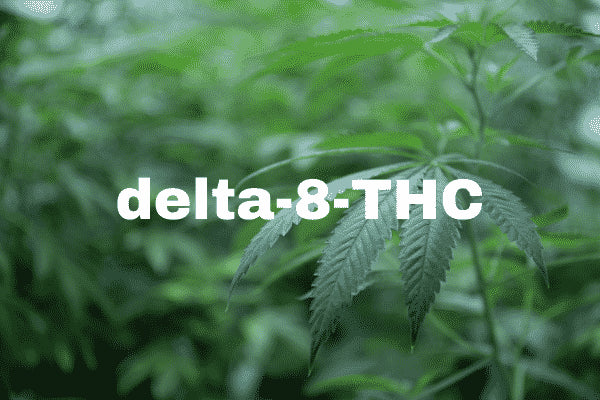Table of Contents
- Introduction
- Stimulants vs. Depressants vs. Hallucinogens
- Cannabis Pharmacology: What’s in the Plant
- When Cannabis Acts Like a Stimulant
- When Cannabis Acts Like a Depressant
- When Cannabis Feels Psychedelic
- What Determines the Effect: Dose, Strain & Setting
- How to Choose the Right Type of Effect
- Conclusion
- About the Author
Introduction
Is cannabis a stimulant or a depressant? If you’ve used weed before, you might say: "It depends." Sometimes it gives you energy and focus. Other times it makes you relaxed—or even spaced out. So which is it?
This guide explores the complex truth about cannabis and its classification. You’ll learn how cannabis doesn’t fit neatly into one pharmaceutical category—and why it can act like a stimulant, depressant, or mild hallucinogen depending on the strain, dose, and your body’s response.
We’ll break down how cannabinoids like THC and CBD affect your brain and nervous system, what scientific classifications mean, and how to choose the right cannabis experience based on your goals.
Stimulants vs. Depressants vs. Hallucinogens
In pharmacology, drugs are often grouped into three broad categories based on how they affect the central nervous system (CNS):
1. Stimulants
These increase CNS activity, elevate heart rate and blood pressure, and enhance alertness and energy. Common stimulants include caffeine, nicotine, amphetamines, and cocaine.
2. Depressants
These decrease CNS activity, leading to calming, sedative, or sleep-inducing effects. Alcohol, benzodiazepines (like Valium), and barbiturates fall into this category.
3. Hallucinogens
These alter perception, mood, and cognition. LSD, psilocybin (magic mushrooms), and DMT are classic examples. Some depressants or stimulants can have hallucinogenic properties in high doses or certain individuals.
But where does cannabis fit? That’s the tricky part. Because it contains dozens of active compounds with different effects, cannabis can straddle all three categories.
Cannabis Pharmacology: What’s in the Plant
The effects of cannabis come primarily from its chemical constituents—called phytocannabinoids and terpenes. The two most well-known cannabinoids are:
- THC (Tetrahydrocannabinol): The main psychoactive compound that causes euphoria, altered perception, and other mental and physical effects
- CBD (Cannabidiol): Non-intoxicating, modulates THC effects, and promotes calmness, balance, and potential medical benefits
Key Supporting Compounds:
- CBG, CBC, CBN: Minor cannabinoids with distinct effects like mood enhancement, sedation, or neuroprotection
- Terpenes: Aromatic compounds (like limonene, pinene, myrcene) that influence effect profile—e.g., energizing vs. calming
These compounds interact with the endocannabinoid system (ECS), a regulatory network in the body that affects mood, memory, pain, appetite, immune function, and more. This system helps explain why cannabis can feel so different person to person—and even strain to strain.
Next, we’ll break down when and why cannabis behaves like a stimulant—or the opposite.
When Cannabis Acts Like a Stimulant
Many users report energizing, motivating, or focus-enhancing effects from cannabis—especially in small doses and with specific strains. In these cases, cannabis can mimic the effects of a mild stimulant like caffeine or nicotine.
Common Stimulant-Like Effects of Cannabis:
- Increased alertness and talkativeness
- Boosted creativity and problem-solving
- Elevated heart rate and shallow breathing
- Heightened sensory perception (colors, sounds, textures)
- Improved mood or euphoria (dopamine release)
What Contributes to This Effect:
- Sativa-dominant strains: Especially those high in limonene, pinene, or terpinolene
- Low to moderate THC doses: Higher doses may flip the experience to sedative or foggy
- Context: Daytime use, movement, creativity, or social settings amplify stimulant-like outcomes
In these cases, cannabis supports mental engagement and physical activity. This effect is often used by people microdosing cannabis for ADHD, creative work, or mood elevation. Read our guide to microdosing here for a deeper look at how small doses enhance alertness without overwhelm.
When Cannabis Acts Like a Depressant
In other contexts, cannabis acts much more like a depressant. This doesn’t mean it causes depression—it means it slows down nervous system activity, calms the mind, relaxes muscles, and induces sleep. These effects are especially pronounced in higher doses or in strains rich in certain cannabinoids and terpenes.
Common Depressant-Like Effects:
- Physical relaxation or "couch-lock" sensation
- Sleepiness or sedation
- Reduced motor coordination and reflexes
- Anxiolytic (anti-anxiety) effect at low-to-moderate doses
- Lowered heart rate and slowed thinking in some users
What Contributes to This Effect:
- Indica-dominant strains: Especially those high in myrcene or linalool
- High THC doses: Large amounts can overwhelm the ECS and slow brain-body communication
- Evening use or sedentary setting: Environment and activity level greatly influence outcome
For many, this effect is desirable for winding down, managing pain, or supporting deep sleep. But in excess, it can lead to grogginess, impaired thinking, or lingering effects into the next day.
When Cannabis Feels Psychedelic
Although cannabis is not classified as a hallucinogen in the same league as LSD or psilocybin, it can cause mild psychedelic effects—especially at high doses or in sensitive individuals. These effects are more common with strong edibles or potent concentrates.
Common Psychedelic-Like Effects of Cannabis:
- Time distortion or altered sense of time
- Introspective or “meta” thinking
- Visual patterns or intensified colors
- Spiritual or emotional insights
- Heightened sensory integration (synesthesia-like experiences)
These effects are usually transient and depend heavily on mindset and environment. While they can be meaningful or even therapeutic, they may also lead to confusion, paranoia, or anxiety in unprepared users.
Some researchers argue that cannabis occupies a unique space on the drug spectrum—acting as a "mild entheogen" under specific conditions. This dual nature is why some users consider cannabis a spiritual tool rather than a recreational drug.
What Determines the Effect: Dose, Strain & Setting
Cannabis is famously variable. The same strain that makes one person energized may make another sleepy. So what shapes this unpredictability?
1. Dose
Low doses may energize, uplift, and sharpen focus. High doses are more likely to sedate, dissociate, or cause anxiety. Dose is the single biggest factor in cannabis effect variability.
2. Strain & Chemical Profile
- Sativa-leaning strains often contain limonene, pinene → more uplifting
- Indica-leaning strains often contain myrcene, linalool → more relaxing
- THC-heavy strains more likely to produce psychoactivity and stimulation or paranoia
- CBD-rich strains tend to buffer overstimulation and offer body-focused relief
3. Set & Setting
Your mood, physical state, location, and expectations all shape how cannabis feels. A quiet room may lead to introspection. A social space may amplify energy. Anxiety or fatigue may tilt the experience toward sedation or overwhelm.
To learn how to shape your experience intentionally, check out our guide: How to Inhale Weed Safely and Effectively.
How to Choose the Right Type of Effect
Since cannabis can act as a stimulant, depressant, or even mild hallucinogen, the key is learning how to guide your experience intentionally. Here’s how to tailor your session based on your needs:
Looking for Energy or Focus?
- Choose Sativa-dominant strains with uplifting terpenes like limonene and pinene
- Use low doses (especially when vaporizing or microdosing)
- Pair with activity: work, socializing, creativity
- Try devices that allow one-hit sessions like the Vapman or Lotus
Looking for Calm or Sleep?
- Choose Indica-dominant strains with myrcene, linalool, or CBN
- Vaporize at lower temps for terpene retention
- Take slightly larger doses in quiet environments
- Set your setting: dim lights, soft music, reclined posture
Exploring Inner Awareness or Creativity?
- Start with hybrid strains that balance mind and body
- Use moderate doses with breath awareness or journaling
- Combine cannabis with meditation, nature walks, or art
Conclusion
So, is cannabis a stimulant or depressant? The answer isn’t black and white. Cannabis is a complex plant that can energize, relax, or open the mind—depending on your dose, chemistry, and intention. It’s all about how you engage with it.
Rather than fitting cannabis into a rigid category, think of it as a spectrum tool. It amplifies what’s already within you—and reflects how you use it. With mindful strain selection, controlled vaporization, and clear intention, you can shape your experience from clarity to calm, and everywhere in between.
Start low, observe carefully, and inhale with purpose. One breath can energize—or soften. Cannabis meets you where you are.
About the Author

Author: Michael Mussner, Founder of INHALE Vaporizers
Michael is a passionate vaporizer designer and entrepreneur from South Tyrol, driven by craftsmanship, sustainability, and the mindful use of natural herbs. With a background in product innovation and a love for analog technology, he founded INHALE to revive flame-powered vaporizers like the Vapman and Lotus. Every product he creates is deeply rooted in authenticity, simplicity, and a respect for nature.
Questions? Contact us here or email support@nowinhale.com.

















Leave a comment
All comments are moderated before being published.
This site is protected by hCaptcha and the hCaptcha Privacy Policy and Terms of Service apply.